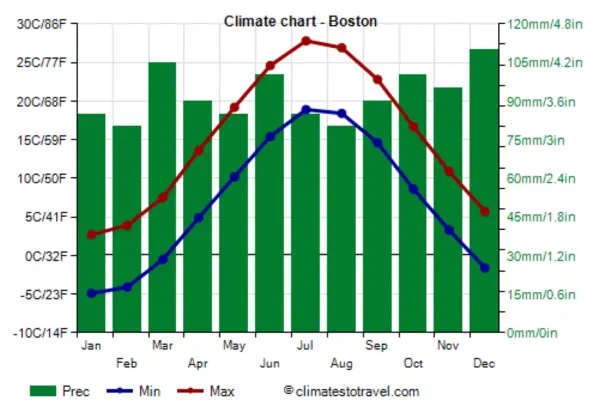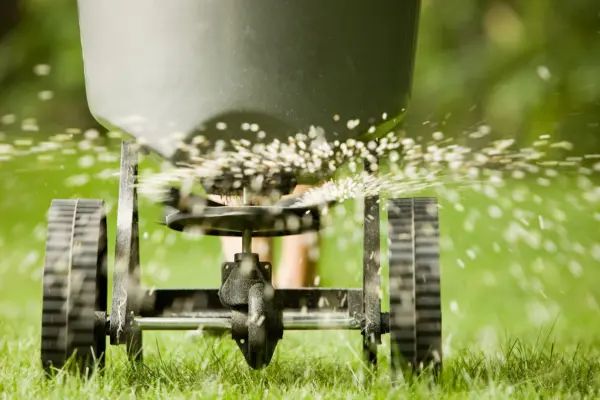Maintaining a green and healthy lawn in Massachusetts requires more than just regular mowing. Understanding the best times to fertilize your lawn is crucial for achieving optimal growth and health.
In Massachusetts, the varying climate across seasons means that lawn care practices need to be adjusted accordingly.
Whether you’re a seasoned gardener or a new homeowner, knowing when to fertilize your lawn in Massachusetts can make all the difference between a vibrant, healthy lawn and one that’s struggling to thrive.
Why Timing Matters
Fertilizing your lawn at the right time ensures that your grass receives the nutrients it needs when it can best utilize them. Incorrect timing can lead to nutrient runoff, poor growth, and increased susceptibility to diseases. By aligning your fertilization schedule with the specific needs of your lawn throughout the year, you can support robust growth and maintain a beautiful lawn.
Understanding Massachusetts’ Climate and Its Impact on Lawn Care

Massachusetts experiences a diverse range of climate conditions due to its geographic location. The state enjoys four distinct seasons: a cold winter, a warm to hot summer, and transitional periods in spring and fall. Each season impacts lawn care differently:
Winter: Cold temperatures and potential snowfall can lead to dormant grass. While the lawn may not grow much, it’s important to prepare it for the upcoming growing season.
Spring: This is a critical period for lawn growth as the grass starts to wake up from its winter dormancy. Warmer temperatures and increased sunlight stimulate growth.
Summer: Hot temperatures can stress the lawn, making proper watering and fertilization essential to prevent drought damage.
Fall: Cooler temperatures and increased moisture levels help prepare the lawn for winter, making fall an important time for fertilization.
The Best Time to Fertilize Your Lawn in Massachusetts

Late April to Early May: The First Application
Spring is a critical time for lawn care in Massachusetts. As the weather warms up, it signals the start of the growing season. Late April to early May is generally considered the best time to apply your first round of fertilizer. At this stage, soil temperatures have warmed to around 55°F, which is optimal for grass growth and nutrient uptake.
Why Late April?
Soil Temperature: Fertilizer applied too early, when the soil is still cold, won’t be as effective. Late April provides a good balance, ensuring the soil is warm enough to allow for nutrient absorption.
Grass Recovery: After winter, grass needs a boost to recover and start growing robustly. Fertilizing at this time supports this recovery phase, setting a strong foundation for the growing season.
Recommended Fertilizer Types
Nitrogen-rich Fertilizers: Look for fertilizers with a higher nitrogen content, as this nutrient promotes green, lush growth. A balanced N-P-K ratio like 20-10-10 works well for spring applications.
Slow-release Formulas: Consider using slow-release fertilizers to provide a steady supply of nutrients over time. This can help maintain consistent growth and reduce the risk of nutrient leaching.
Monthly Fertilization Schedule Through Early Summer
May to June: Continued Fertilization
Once you’ve completed the initial fertilization in late April or early May, it’s important to maintain a consistent fertilization schedule throughout early summer. Monthly fertilization from May to June helps your lawn stay healthy and resilient as it faces the challenges of summer.
Why Monthly?
Nutrient Maintenance: Regular feeding ensures your lawn continues to receive essential nutrients, supporting strong growth and helping it handle stress from heat and drought.
Growth Support: Grass grows rapidly during spring and early summer. Monthly applications keep up with the increased nutrient demands of the growing turf.
Recommended Fertilizer Applications
Balanced Fertilizers: Use balanced fertilizers with equal or nearly equal parts nitrogen, phosphorus, and potassium (e.g., 15-15-15) to support overall growth.
Water-soluble Options: These can be effective for quick nutrient uptake, especially if the grass shows signs of nutrient deficiencies.
Additional Tips for Spring and Early Summer Fertilization
Avoid Over-fertilization: Applying too much fertilizer can lead to excessive growth and increased vulnerability to diseases. Follow the manufacturer’s guidelines for application rates.
Watering: Ensure the lawn is adequately watered after fertilization to help nutrients reach the roots and avoid burning the grass.
Conclusion: When to Fertilize Your Lawn in Massachusetts?
Fertilizing your lawn at the right time in spring and early summer is crucial for establishing a strong foundation and supporting healthy growth throughout the growing season. By starting your fertilization routine in late April and continuing monthly through June, you set your lawn up for success. In the next sections, we will cover additional aspects of lawn care, including applying crabgrass preventer, mowing practices, and winter fertilization techniques to keep your lawn in top shape year-round.

